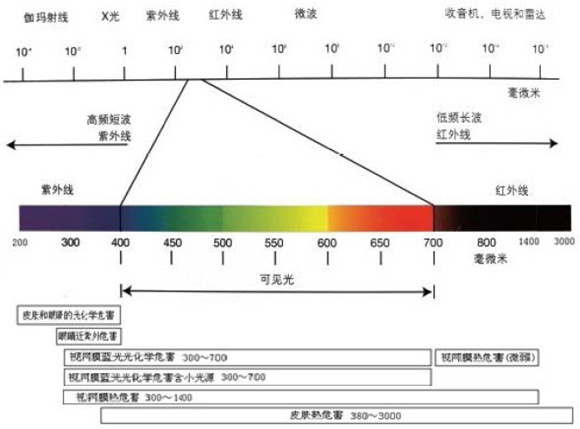The entry of an LED into the lighting industry has caused an emphasis on the light biosafety of lighting products.
As the efficacy of LED lighting products continues to increase, the brightness continues to increase, especially after the emergence of high-power white LEDs, the harm of LED light radiation to the human body has caused widespread concern in all aspects.
Since LEDs were born in the semiconductor industry, LEDs have been tested in accordance with IEC 60825-1. However, the wide-spectrum and diffused beam output characteristics of LEDs for illumination are significantly different from those of laser LEDs. The detection and determination principles in the IEC60825-1 standard clearly do not fully meet the detection requirements of LED products for illumination.
From the LED, the light beam that may harm the human body may be generated, and the artificial light source may also have the potential danger of damaging the human body's light. Therefore, in 2002 CIE released CIE S 009/E: 2002 "Photobiosafety of Lamps and Lamp Systems", covering all non-coherent broadband electric light sources, including light-emitting diodes (LEDs) but not lasers, at 200 nm. The photobiohazard of optical radiation in the 3000 nm wavelength range was evaluated.
In 2006, the IEC organization developed the IEC 62471:2006 "Photobiosafety of Lamps and Lamp Systems", which was equivalent to CIE 009/E:2002, and released the technical report IEC TR 62778-2012 "IEC 62471 standard" in 2012. And blue light hazard evaluation applications for lamps. In 2006, China also issued the national standard GB/T 20145-2006 "Photobiosafety of lamps and lamp systems" equivalent to CIE009/E:2002.
The IEC 62471 standard is a comprehensive basic evaluation standard covering optical radiation in the wavelength range from 200 nm to 3000 nm and contains all the hazards that may be generated by artificial light sources in this spectral range. The IEC 62471 standard assesses eight aspects of light hazard. , respectively:
- Photochemical hazards of skin and eyes (200 ~ 400nm)
- Eye near ultraviolet hazard (315 ~ 400nm)
- Retinal blue photochemical hazard (300 ~ 700nm)
- Retinal blue light photochemical hazard with small light source (300 ~ 700)
- Retinal heat hazard (380 ~ 1400nm)
- Retinal heat hazard weak visual stimulation (780 ~ 1400nm)
- Infrared radiation hazard of the eye (780 ~ 3000nm)
- skin heat hazard (380 ~ 3000nm)
These hazards are visually represented graphically, as shown in Figure 1:

Figure 1 Light hazard distribution map in the range of 200 to 3000 nm
2. How to apply the IEC 62471 standard to evaluate the light emitted by lighting products
The spectrum of the lighting products we use every day is generally in the visible range, and depending on the characteristics of the light source product, it does not necessarily produce all the hazards described in the standard. The IEC 62471 standard is a basic standard. For specific lighting products, such as fluorescent lamps and incandescent lamps, specific light hazard assessment methods and evaluation methods should be continued according to the characteristics of the light emitted.
The light sources we use every day mainly include incandescent lamps, fluorescent lamps, HID lamps and LED lamps. The IEC/TC 34 Lamp and Related Equipment Technical Committee has embarked on a study of various lighting products, including specific product requirements for light biosafety for light sources and luminaires. In the following, combined with the spectral characteristics and illuminating principle of the light source, the latest technical requirements of the IEC/TC 34 standard committee for light hazards will be introduced to everyone.
